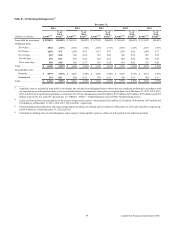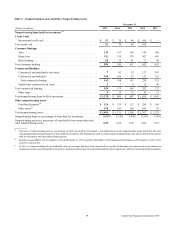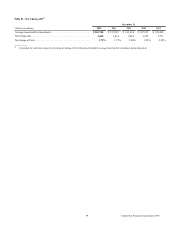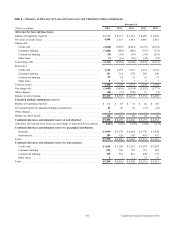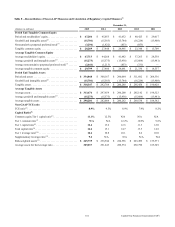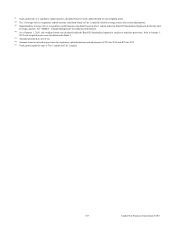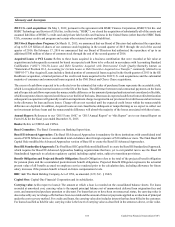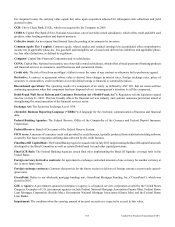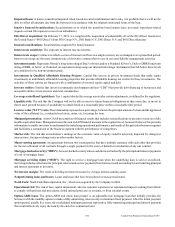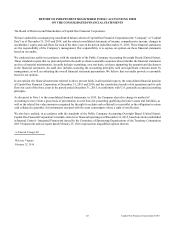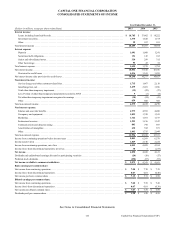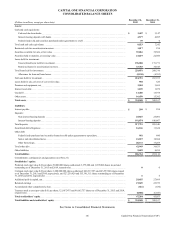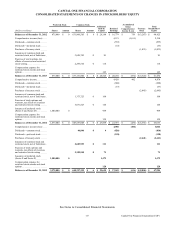Capital One 2015 Annual Report Download - page 126
Download and view the complete annual report
Please find page 126 of the 2015 Capital One annual report below. You can navigate through the pages in the report by either clicking on the pages listed below, or by using the keyword search tool below to find specific information within the annual report.107 Capital One Financial Corporation (COF)
Other-than-temporary impairment (“OTTI”): An impairment charge taken on a security whose fair value has fallen below the
carrying value on the balance sheet and its value is not expected to recover through the holding period of the security.
Patriot Act: The USA PATRIOT Act of 2001 (Uniting and Strengthening America by Providing Appropriate Tools Required to
Intercept and Obstruct Terrorism).
Portfolio Sale: The sale of the Best Buy private label and co-branded credit card portfolio to Citibank, N.A., which was completed
on September 6, 2013.
Proxy Statement: Capital One’s Proxy Statement for the 2015 Annual Stockholders Meeting.
Public Fund deposits: Deposits that are derived from a variety of political subdivisions such as school districts and municipalities.
Purchase volume: Dollar amount of customer purchases, net of returns.
Rating agency: An independent agency that assesses the credit quality and likelihood of default of an issue or issuer and assigns
a rating to that issue or issuer.
Recorded investment: The amount of the investment in a loan which includes any direct write-down of the investment.
Repurchase agreement: An instrument used to raise short-term funds whereby securities are sold with an agreement for the seller
to buy back the securities at a later date.
Restructuring charges: Charges typically from the consolidation or relocation of operations, and reductions in work force.
Return on average assets: Calculated based on income from continuing operations, net of tax, for the period divided by average
total assets for the period.
Return on average common equity: Calculated based on the sum of (i) income from continuing operations, net of tax; (ii) less
dividends and undistributed earnings allocated to participating securities; (iii) less preferred stock dividends, for the period, divided
by average common equity. Our calculation of return on average common equity may not be comparable to similarly titled measures
reported by other companies.
Return on average tangible common equity: Calculated based on the sum of (i) income from continuing operations, net of tax;
(ii) less dividends and undistributed earnings allocated to participating securities; and (iii) less preferred stock dividends, for the
period, divided by average tangible common equity. Our calculation of return on average tangible common equity may not be
comparable to similarly titled measures reported by other companies.
Risk-weighted assets: Consist of on- and off-balance sheet assets that are assigned to one of several broad risk categories and
weighted by factors representing their risk and potential for default. In 2014, the calculation of risk weighted assets is based on
the general risk-based approach, as defined by regulators.
Securitized debt obligations: A type of asset-backed security and structured credit product constructed from a portfolio of fixed-
income assets.
SOP 03-3: Statement of Position 03-3 (or ASC 310-30), Accounting for Certain Loans or Debt Securities Acquired in a Transfer.
Small-ticket commercial real estate: Our small-ticket commercial real estate portfolio is predominantly low- or no-documentation
loans with balances generally less than $2 million. This portfolio was originated on a national basis through a broker network and
is in a run-off mode.
Subprime: For purposes of lending in our Credit Card business we generally consider FICO scores of 660 or below, or other
equivalent risk scores, to be subprime. For purposes of auto lending in our Consumer Banking business we generally consider
FICO scores of 620 or below to be subprime.
Tangible common equity (“TCE”): Common equity less goodwill and intangible assets adjusted for deferred tax liabilities
associated with non-tax deductible intangible assets and tax deductible goodwill.
Tier 1 Common Capital: Tier 1 capital less preferred stock, qualifying trust preferred securities, hybrid securities and qualifying
noncontrolling interest in subsidiaries under Basel I.
Troubled debt restructuring (“TDR”): A TDR is deemed to occur when the Company modifies the contractual terms of a loan
agreement by granting a concession to a borrower that is experiencing financial difficulty.
U.K. PPI Reserve: U.K. Payment Protection Insurance customer refund reserve.


